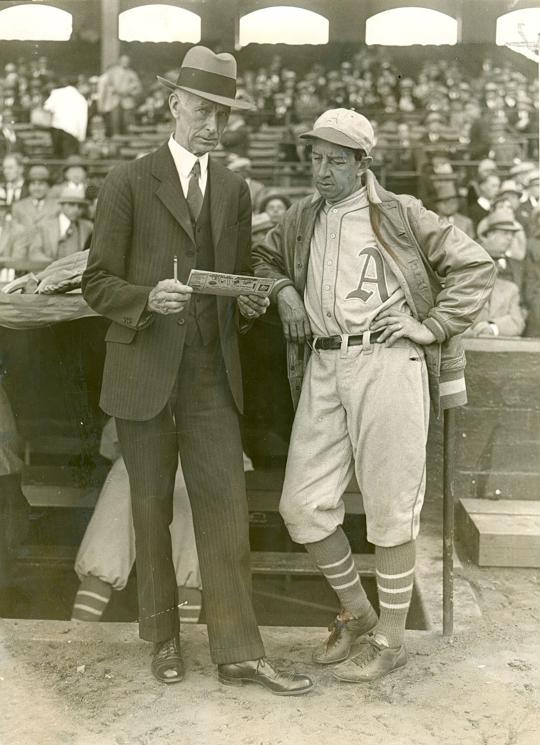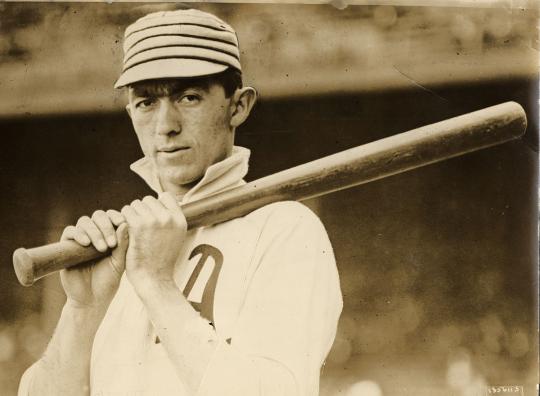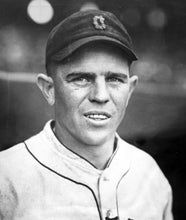- Home
- Our Stories
- Mack trades final piece of $100,000 infield
Mack trades final piece of $100,000 infield
The Philadelphia Athletics had finished in last place three straight years by the end of the 1917 season, and manager Connie Mack was nowhere near done with his rebuilding program.
But on Jan. 10, 1918, Mack and the Athletics tipped their caps to history when they traded first baseman Stuffy McInnis, the last member of the team’s famed “$100,000 Infield” remaining in Philadelphia.
John Phalen McInnis took over as the A’s regular first baseman at the age of 20 during the 1911 season. Over the next four years, Mack and the Athletics won three American League pennants and World Series titles in 1911 and 1913 – having already won the World Series in 1910 before McInnis was a regular.
Hall of Fame Membership
There is no simpler, and more essential, way to demonstrate your support than to sign on as a Museum Member.
With the addition of McInnis to the lineup, the Mackmen sported an infield that also featured future Hall of Famers Eddie Collins at second and Home Run Baker at third as well as Jack Barry at shortstop. The “$100,000 Infield”, as it was called, was the backbone of a dynasty.
But following the A’s shocking sweep at the hands of the Braves in the 1914 World Series – and facing an economic recession in America – Mack chose to break up his juggernaut. Collins, Barry and Baker were all gone by the end of the 1915 campaign, leaving the A’s in last place.
“I am confident that Connie Mack will rebuild his once-great machine,” McInnis was quoted as saying following the 1915 season, “and that the Athletics in one or two more years again will take their old place among the great teams of the day.”
It was, however, not to be. McInnis enduring three losing seasons before Mack traded him to the Red Sox in exchange for Hick Cady, Larry Gardner and Tillie Walker.
The Athletics finished last every season from 1915-21, then slowly climbed back into the American League’s first division, finishing second in 1925. By 1929, Mack had built his second dynasty – with the A’s winning the World Series in 1929 and 1930 before bowing to the Cardinals in the 1931 Fall Classic.
Mack then dismantled that team in the face of the growing Great Depression. He would manage the A’s through the 1950 season, having been elected to the Hall of Fame in 1937.
Philadelphia Athletics' manager Connie Mack (left) converses with fellow Hall of Famer Eddie Collins outside the team's dugout. (National Baseball Hall of Fame and Museum)
Share this image:
McInnis, meanwhile, became one of baseball’s most dependable – and successful – first baseman. Following his two World Series titles with the A’s, McInnis was part of another championship team with the 1918 Red Sox. And in 1925, McInnis won his fourth title with the Pirates.
In 1921 with the Sox, he set a record (since broken) with 163 straight errorless games at first base.
He retired following the 1927 season with a .307 batting average, 2,405 hits and just 251 strikeouts. McInnis is one of only three players – along with Joe Sewell and Willie Keeler – to post multiple seasons with at least 600 plate appearances and fewer than 10 strikeouts.
Craig Muder is the director of communications for the National Baseball Hall of Fame and Museum








